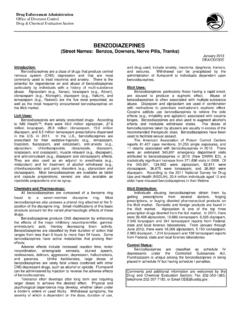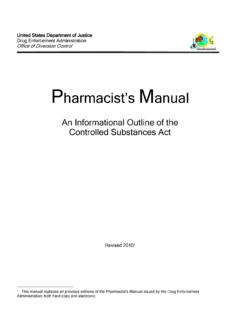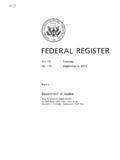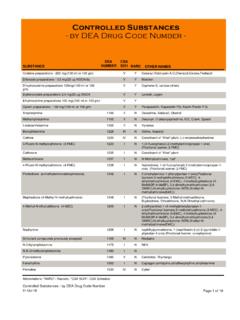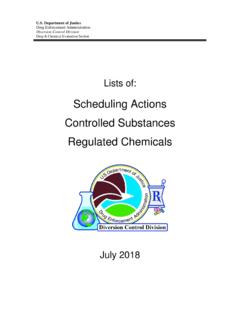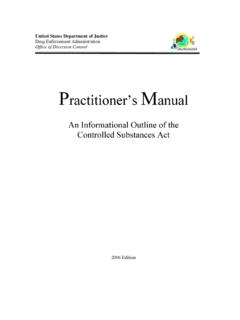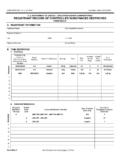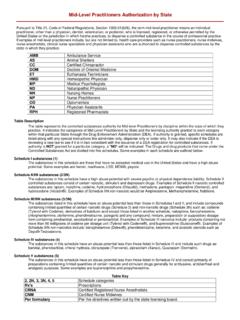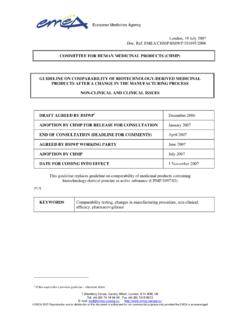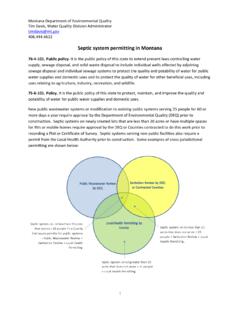Transcription of Xylazine - United States Department of Justice
1 Drug Enforcement Administration Diversion Control Division Drug & chemical Evaluation Section DEA PRB # 2021-15 Xylazine (Trade and Other Names: Rompun , Sedazine , AnaSed ) February 2021 Introduction Xylazine is a drug used in veterinary medicine as a sedative with analgesic and muscle relaxant properties. It is used on many different animal species such as cattle, sheep, horses, dogs, cats, deer, rats, and elk to calm and facilitate handling, perform diagnostic and surgical procedures, relieve pain, or act as a local anesthetic. Reports, alerts, and advisories indicate an increased Xylazine prevalence as an adulterant in drugs of abuse mixtures.
2 This non-narcotic agent was first synthesized in 1962 by the Bayer Company. Xylazine has been studied in humans for its potential use as an analgesic, hypnotic, and anesthetic, but these clinical trials were terminated due to its severe hypotension and central nervous system depressant effects. Licit Uses Xylazine is approved by the Food and Drug Administration (FDA) for veterinary use only. It is available in liquid solutions at 20, 100, and 300 mg/mL. Ty pically, this drug is administered either alone or in conjunction with other anesthetics ( , ketamine or barbiturates) intravenously, intramuscularly, or orally for sedative and relaxant properties.
3 Chemistry The chemical structure of Xylazine is shown below. Xylazine is structurally similar to the class of compounds known as phenothiazines. The molecular formula is C12H16N2S with a molecular weight of g/mol. The chemical Abstract Service (CAS) number is 7361-61-7. The IUPAC name is N-(2,6-dimethylphenyl)-5,6-dihydro-4H-1, 3-thiazin-2-amine and it commonly exists as the hydrochloride salt form. Analytical techniques such as Gas Chromatography (GC) and Liquid Chromatography (LC) paired with Mass Spectrometry (MS) and Nitrogen Phosphorous Detector (NPD) are the common means of detection in biological specimens.
4 Immunoassay is not commonly used for detection in biological specimens. Pharmacology The pharmacology of Xylazine is well established in animal species, however human studies are scarce. Xylazine , acting as an agonist at alpha-2 adrenergic receptors, decreases the release of norepinephrine and dopamine in the central nervous system resulting in effects such as analgesia, sedation and muscle relaxation. Also, Xylazine may have cholinergic, serotonergic, dopaminergic, alpha-1 adrenergic, histaminergic or opiate receptor mechanisms. Xylazine typically has an onset of effects within a few minutes and lasts up to four hours in animals.
5 Pharmacokinetics between animal species did not vary significantly. The major biotransformed metabolite is 2,6-dimethylaniline (DMA). Phase I metabolism includes dealkylation, oxidization, and hydroxylation. Phenolic metabolites were excreted in the glucuronide or sulfate forms. Hydroxylated metabolites were detected in human urine with overdose cases. User Population Exposure to Xylazine is common amongst heroin, fentanyl, and cocaine abusers as Xylazine is often used as an adulterant with illicit substances. Exposure cases have included both intentional and accidental dosing. Toxicity Reported concentrations of Xylazine in humans vary.
6 In non-fatal cases, reported concentrations were from 30 to 4,600 ng/mL with documented toxic effects including blurred vision, disorientation, drowsiness, staggering, coma, bradycardia, respiratory depression, hypotension, miosis, and hyperglycemia. Fatality case reports have documented concentration ranges from a trace amount up to 16,000 ng/mL in both as contributory factor and sole use. Unfortunately, therapeutic, toxic, and lethal concentrations in humans cannot be established because of the overlap of fatal and nonfatal concentrations reported. Higher concentration exposures required medical intervention to treat various symptoms.
7 Illicit Uses and Distribution Xylazine is not approved for human use. Besides its use as an adulterant, reports have also demonstrated that Xylazine was used in Drug Facilitated Crimes (DFC) to induce sleep. The National Forensic Laboratory Information System (NFLIS) is a DEA database that collects scientifically verified drug data. Xylazine was identified in over 3,800 NFLIS-DRUG reports from 2015 through December 2020, with each progressing year increasing compared to the previous year with the largest recording in 2020 of 1,492 reports. Many public health departments and poison control centers issued advisories and alerts while seizure activity have also been reported nationwide with large quantities found in PA, CT, and CA.
8 Control Status Xylazine is not controlled under the federal Controlled Substances Act (CSA). Comments and additional information are welcomed by the Drug and chemical Evaluation Section, Telephone 571-362-3249, or E-mail
